-
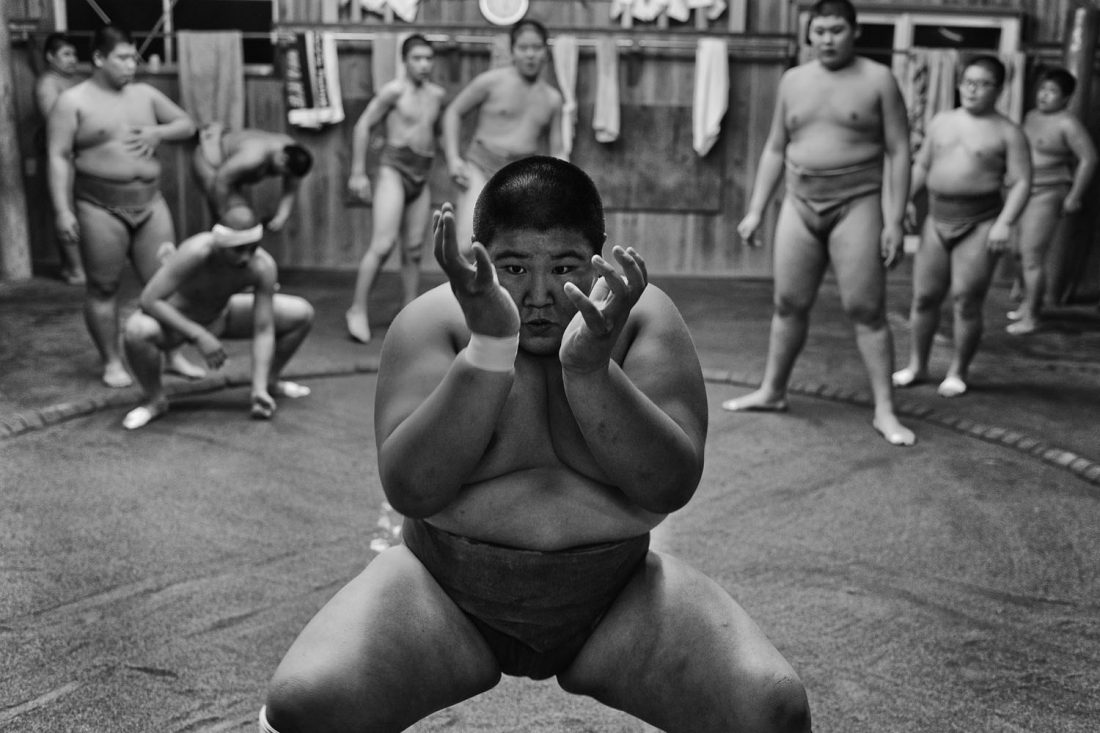
1 / 30
Les lutteurs effectuent le suri-ashi, en avançant sans décoller les pieds du sol. Entrainement journalier dans un club scolaire pour adolescents /// Daily training in a school club. The wrestlers carry out the suri-ashi, advancing with the feet never leaving the ground.
-
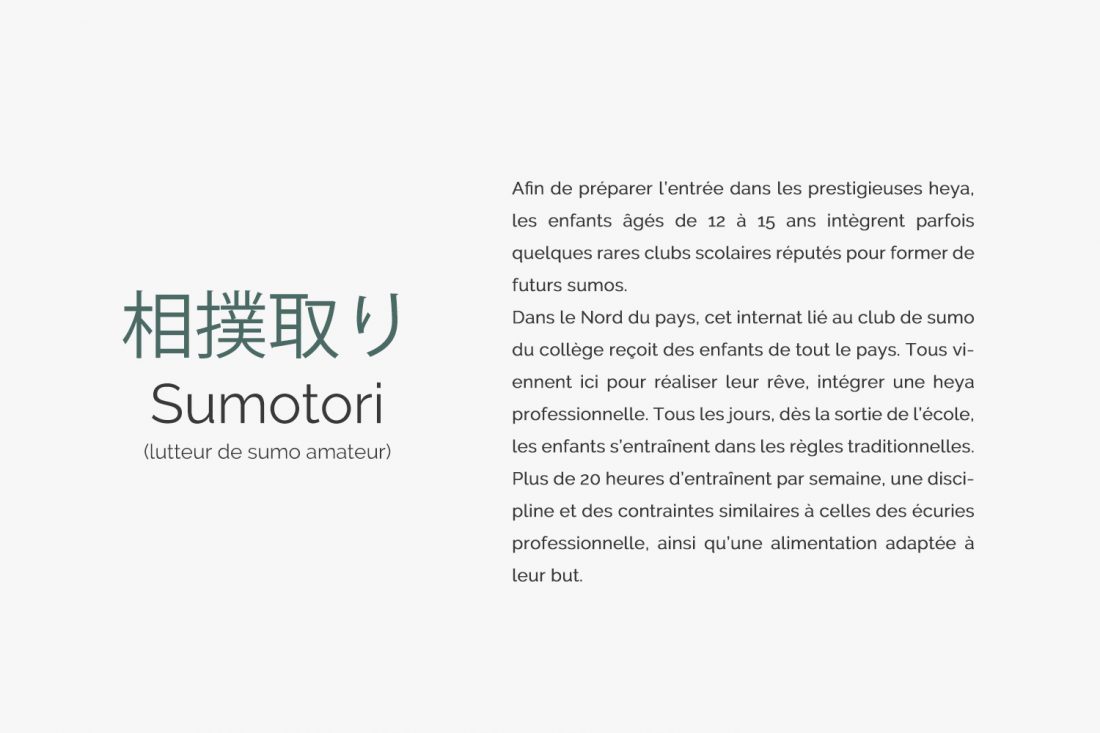
2 / 30
Sumotori (amateur sumo wrestler). To enventually prepare and hope for entry into a heya, children aged from 12 to 15 years sometimes go in one of the few famous school clubs to train future sumos seriously. In the North of the country, this internship related to college sumo club welcomes children from across the country. Every day, right out of school, children train in the traditional rules. More than 20 hours a week. Discipline and constraints similar to those of professional teams, as well as adequate food.
-
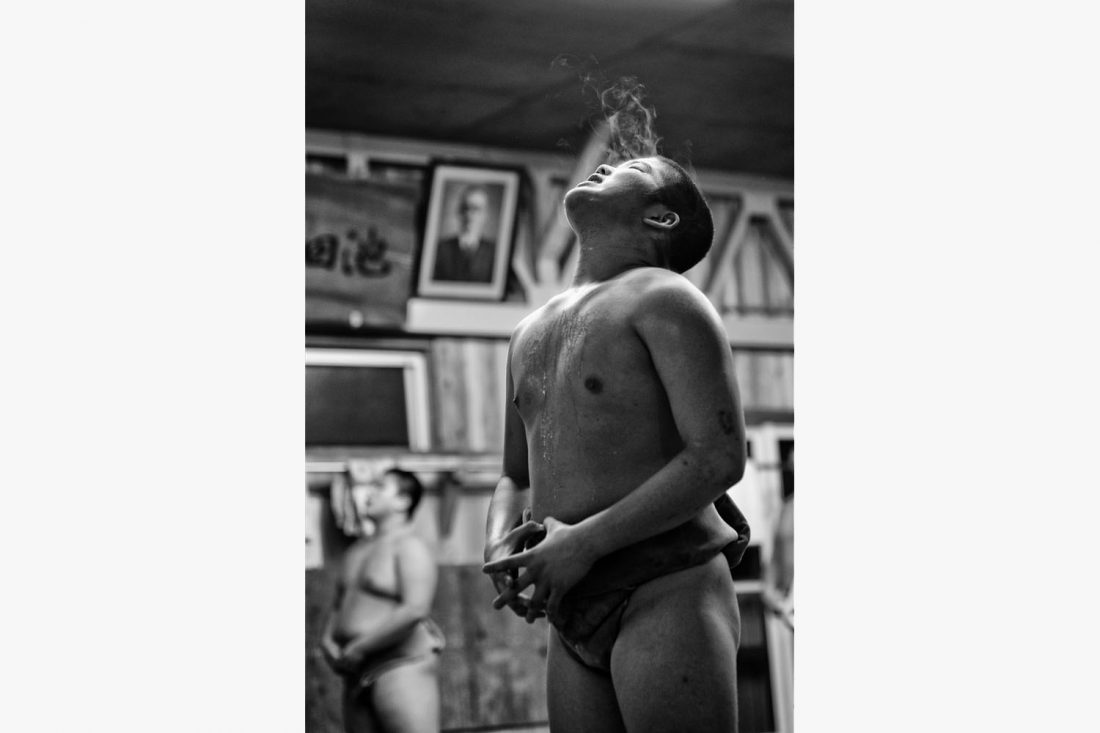
3 / 30
Au plus fort de l'entrainement les corps s'échauffent, mais la concentration doit rester au maximum. Entrainement journalier dans un club scolaire /// At the height of the training session, the body heats up but concentration must remain at a maximum. Daily training in a school club
-
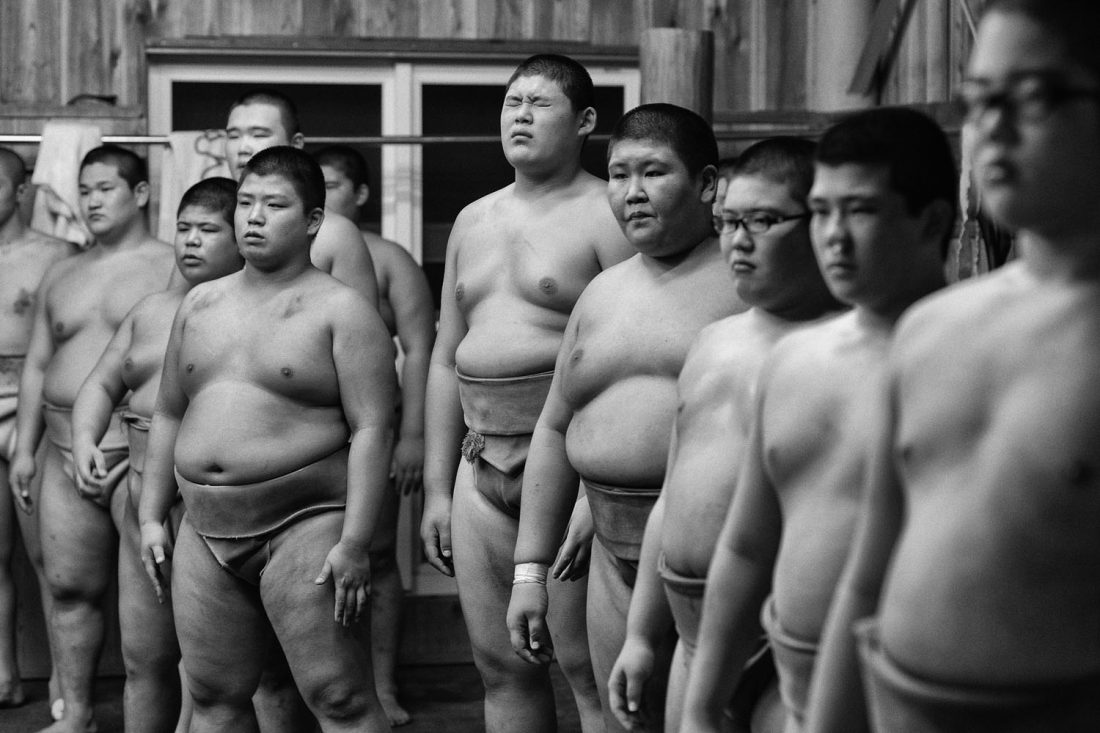
4 / 30
L'écoute est la règle numéro de tout bon sumo. Entrainement journalier dans un club scolaire pour adolescents. /// Attentiveness is the number one rule for any good sumotori. Daily training in a school club
-
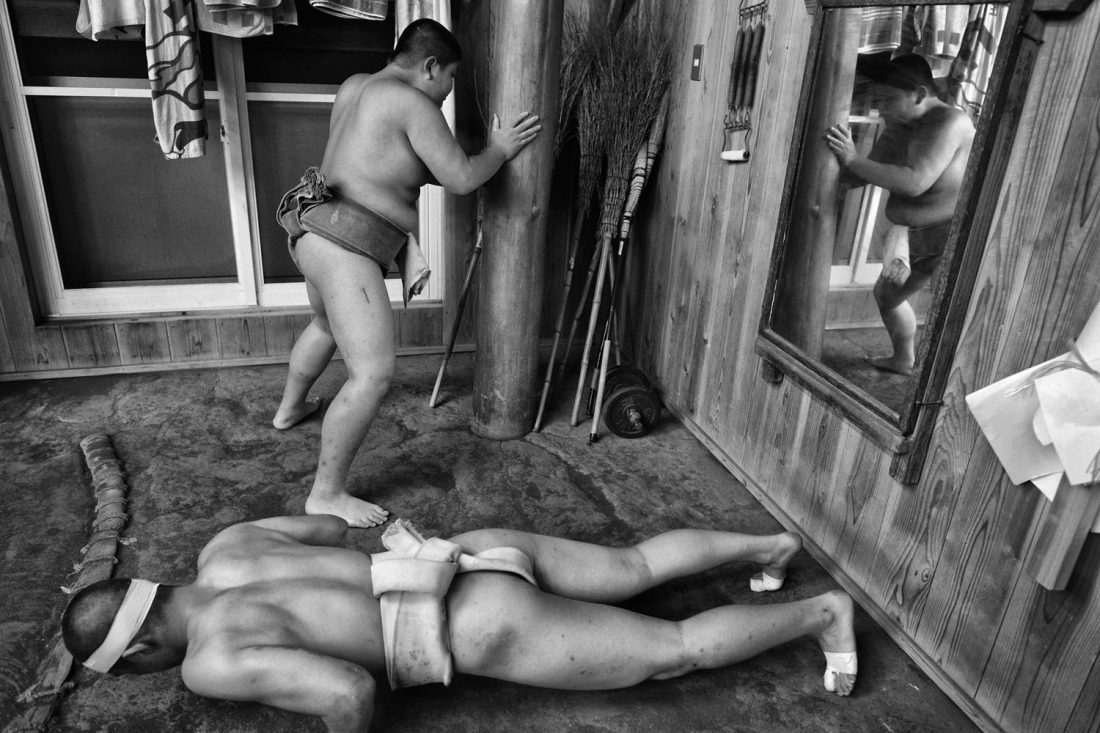
5 / 30
Exercice de pompes et de martelement du teppô (pilier de bois) des paumes /// Push-up exercises and pounding of the teppô (a pillar of wood) with open palms
-
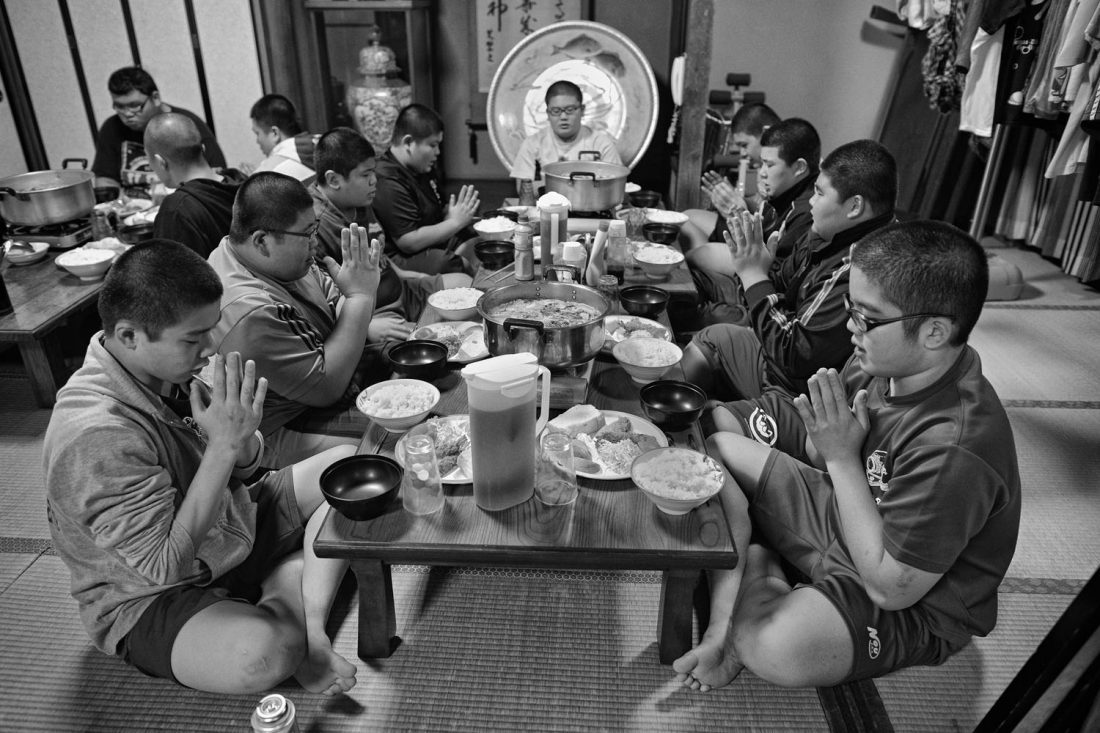
6 / 30
Chant d'équipe avant le repas du soir. Les lutteurs du club scolaire vivent ensembles à l'internat dirigé par un coach /// Team song before the evening meal. The wrestlers at the scholastic club live together at the boarding school directed by a coach
-
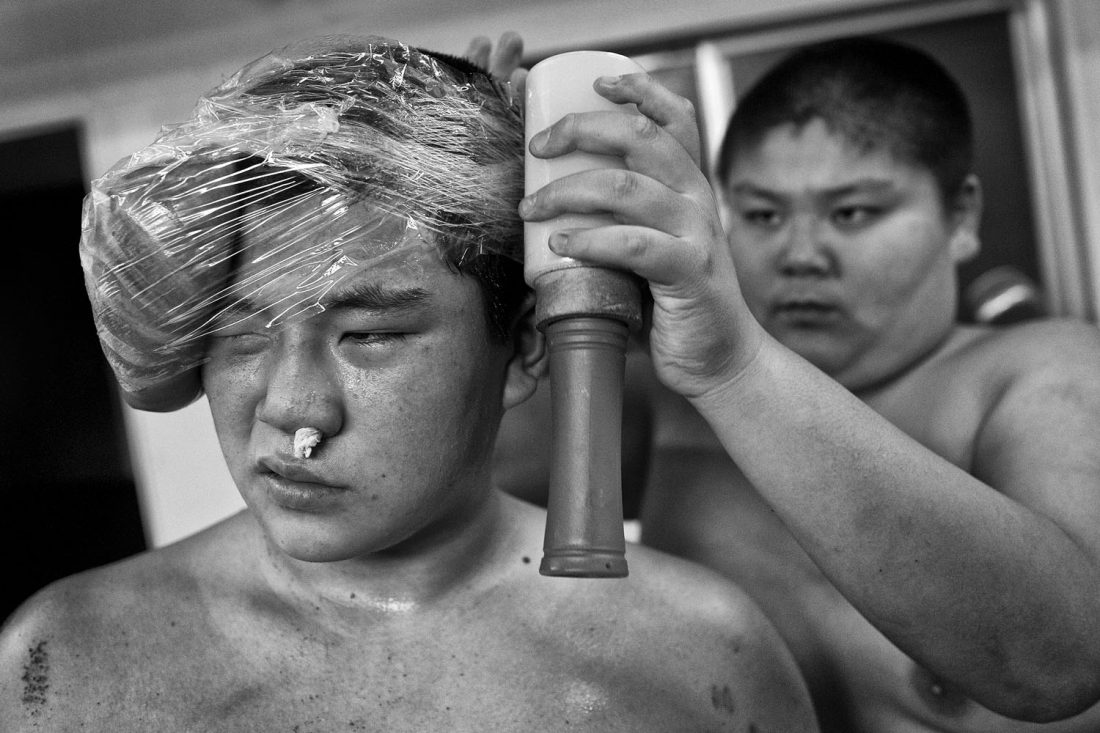
7 / 30
Les coups directs sont interdits, mais les impacts frontaux laissent parfois des traces. /// Daily training in a school club
-
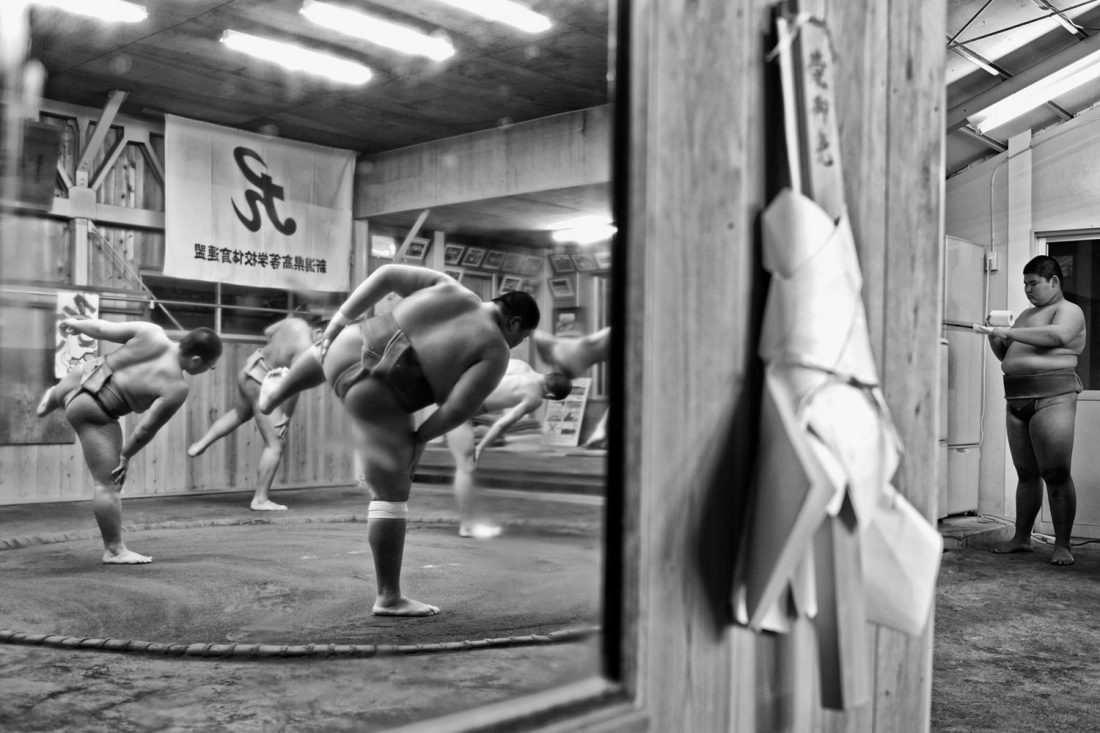
8 / 30
Entrainement journalier dans un club scolaire pour adolescents /// Daily training in a school club
-
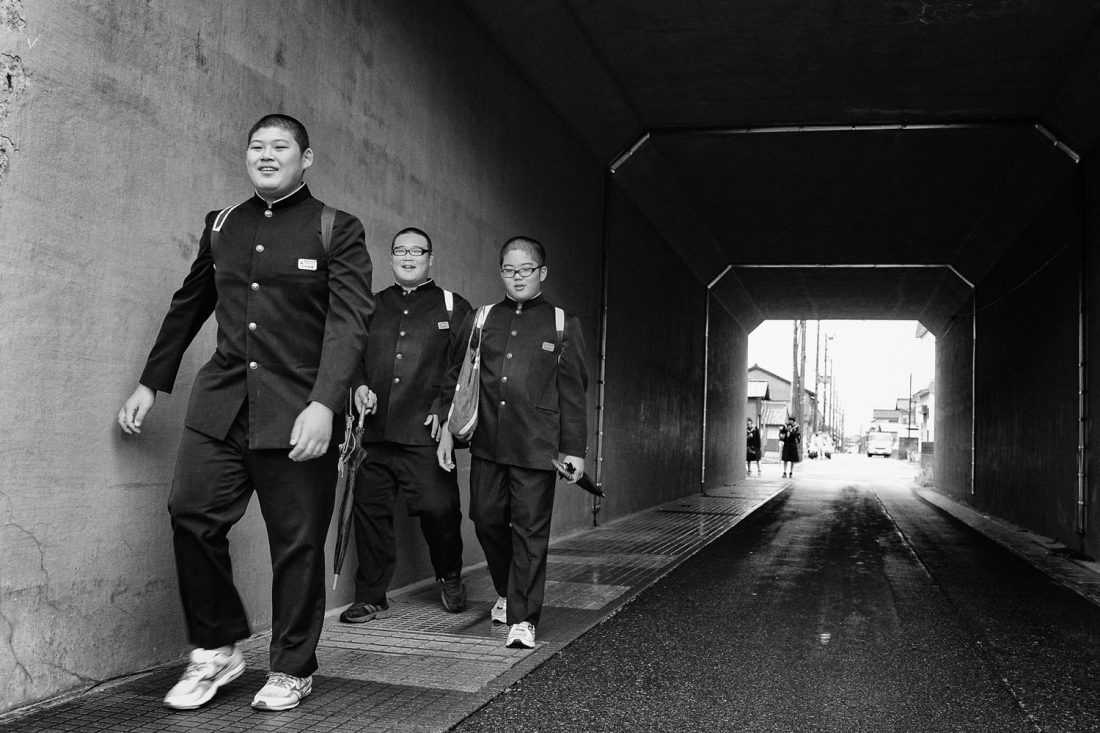
9 / 30
Les lutteurs du club scolaire se rendent de l'internat au collège à pied le matin /// The wrestlers at the scholastic club go from the boarding school to school on foot in the morning.
-
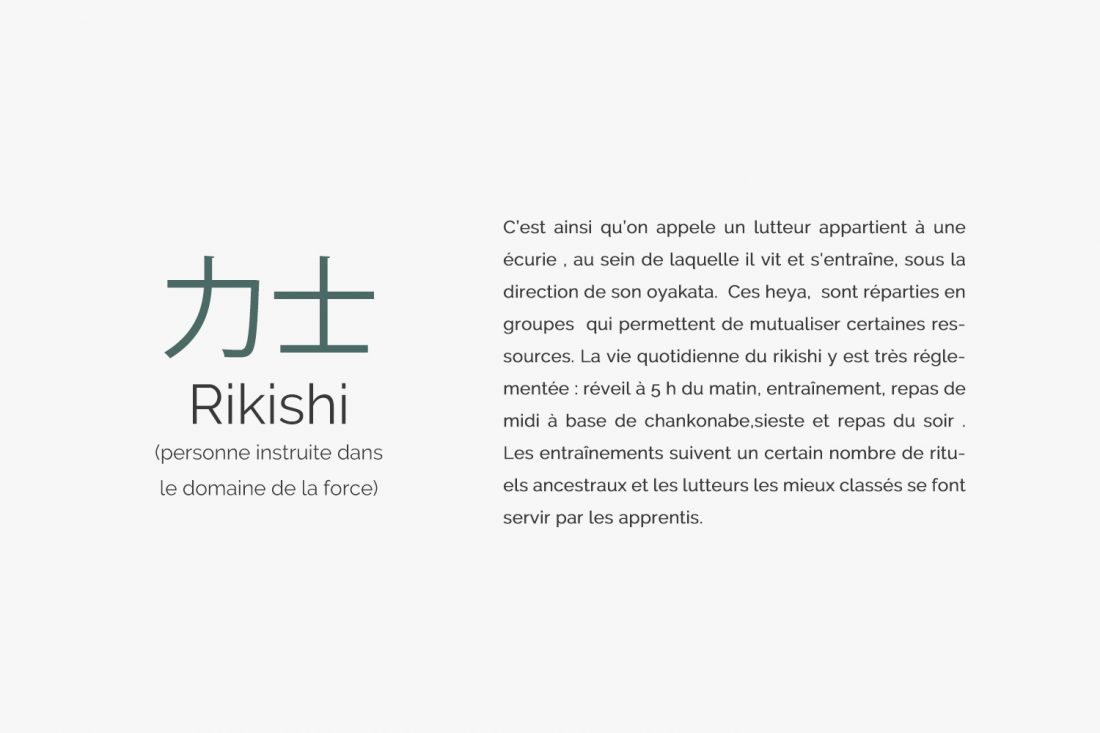
10 / 30
Rikishi : Thus we called a wrestler belongs to a stable in which he lives and trains under the leadership of his oyakata . These heya are divided into groups that can pool certain resources. The daily life of the rikishi is strictly regulated : waking up at 5 in the morning , workout, lunch based chankonabe, nap and dinner. The workouts follow a number of ancestral rituals and the top ranked wrestlers are used by apprentices .
-
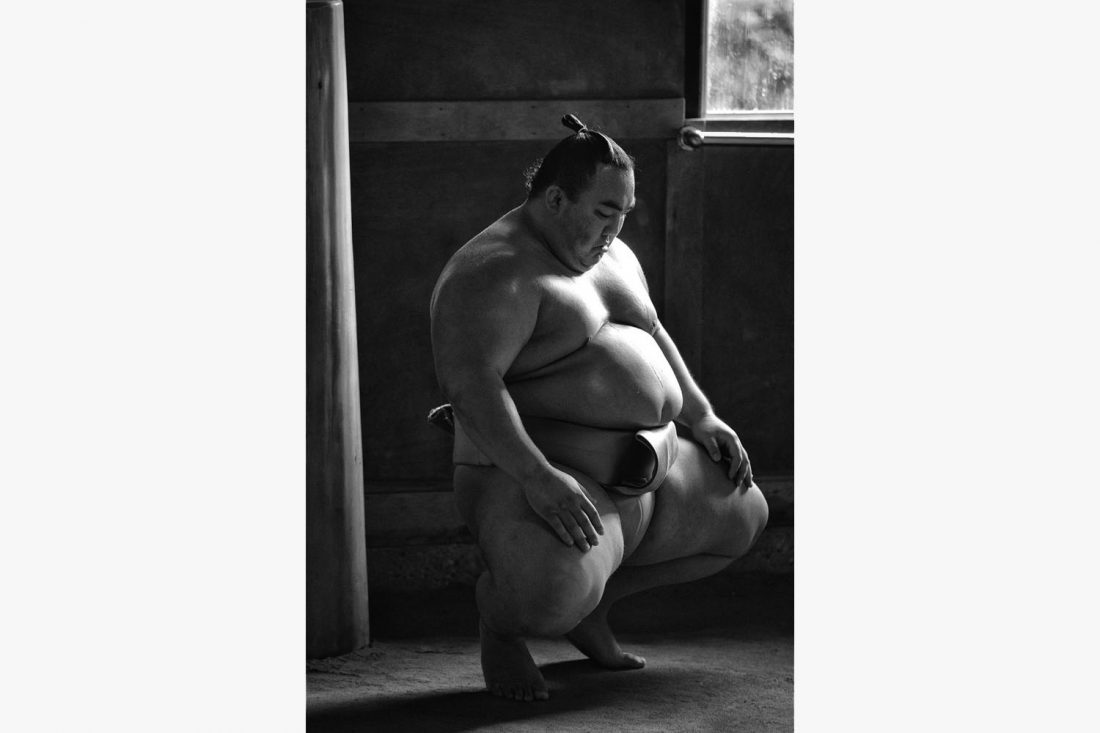
11 / 30
Entrainement matinal dans une heya professionnelle /// Morning training in a professional heya
-
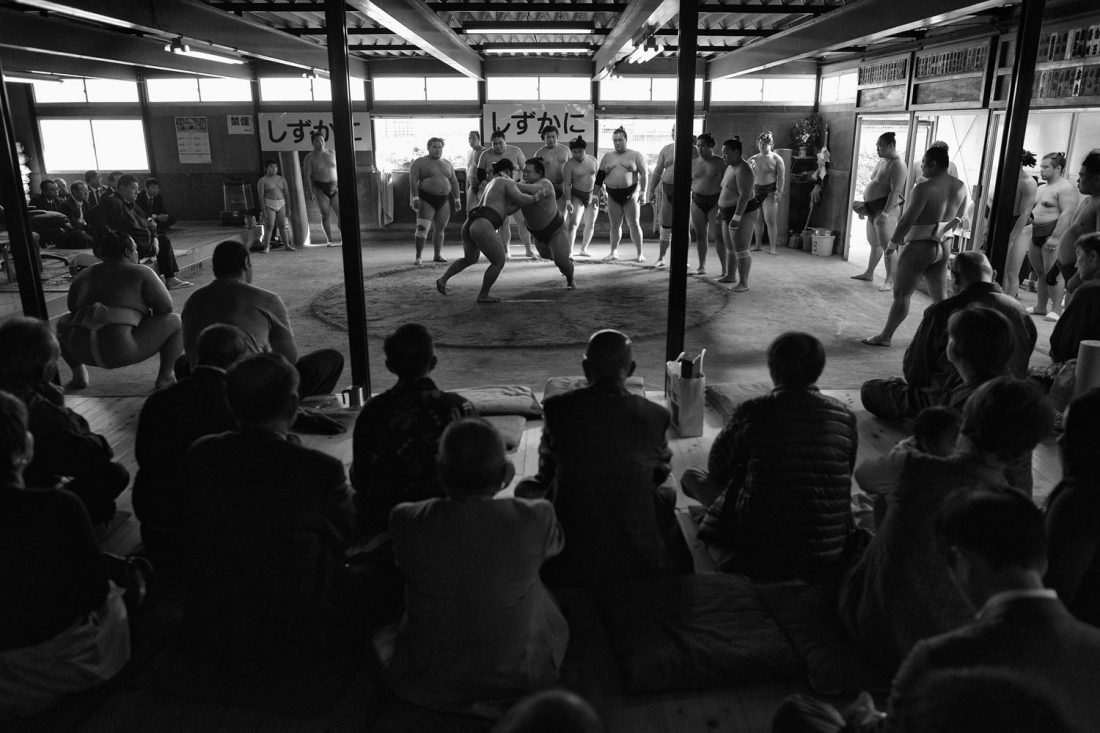
12 / 30
Entrainement matinal dans une heya professionnelle sous le regard des sponsors /// Morning training in a professional heya under the look of sponsors
-
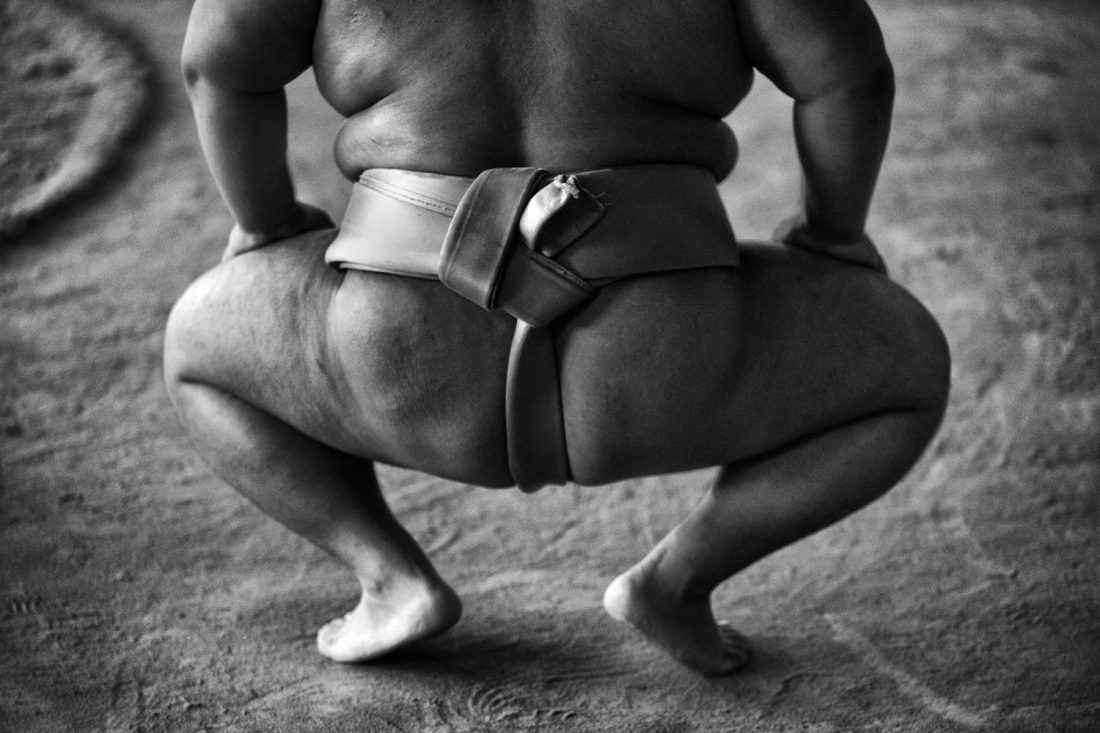
13 / 30
Entrainement matinal dans une heya professionnelle /// Morning training in a professional heya
-
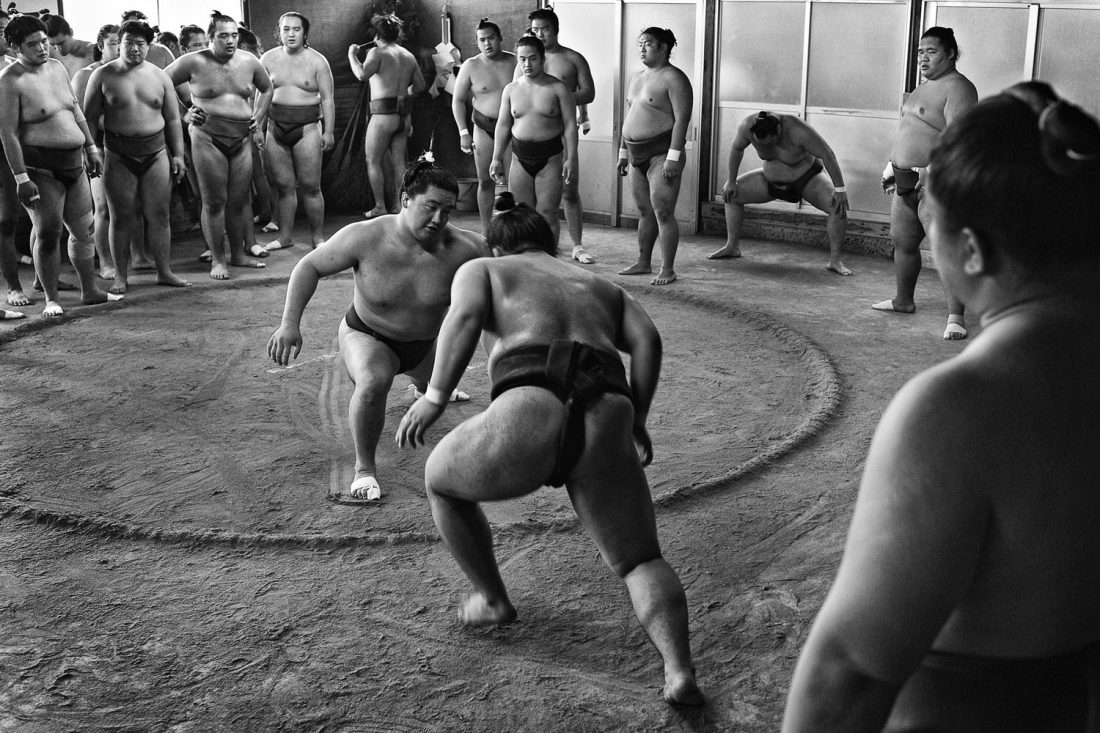
14 / 30
Entrainement matinal dans une heya professionnelle /// Morning training in a professional heya
-
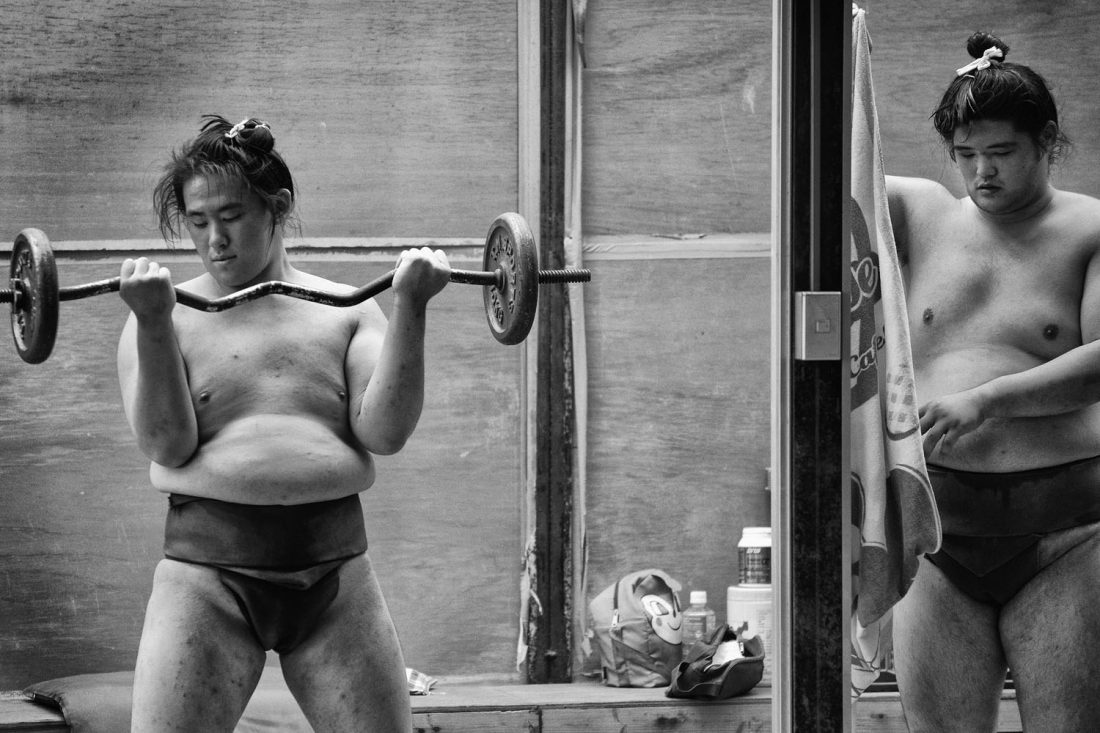
15 / 30
Entrainement matinal dans une heya professionnelle /// Morning training in a professional heya
-
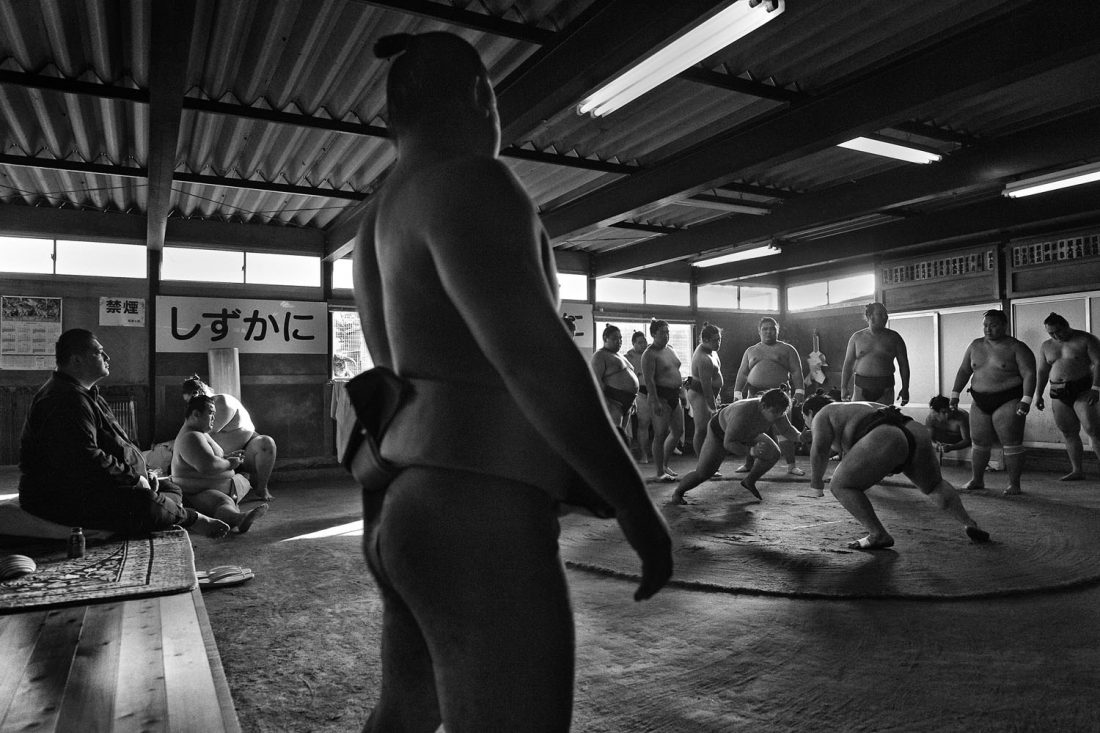
16 / 30
Sous le regard du coach, entrainement matinal dans une heya professionnelle /// Under the coach's gaze, morning training in a professional heya
-
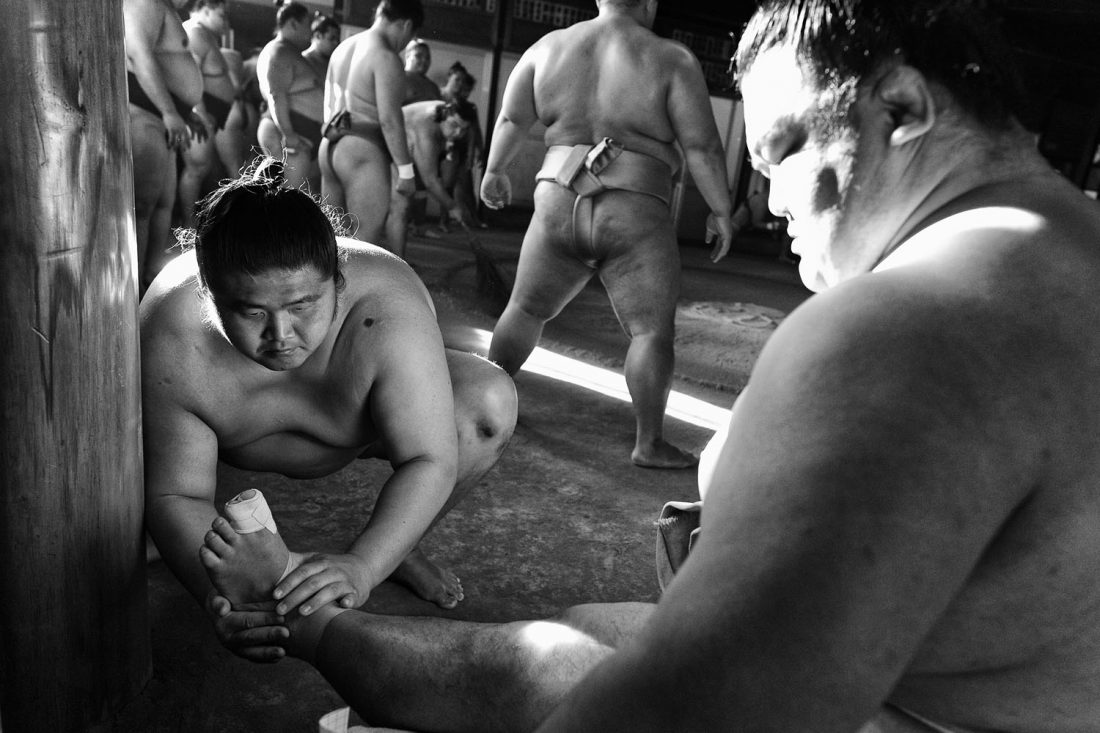
17 / 30
Les champions de l'écurie reçoivent des soins des plus jeunes. Entrainement matinal dans une heya professionnelle /// The stables' youngest members attend to the champions' needs. Morning training in a professional heya
-
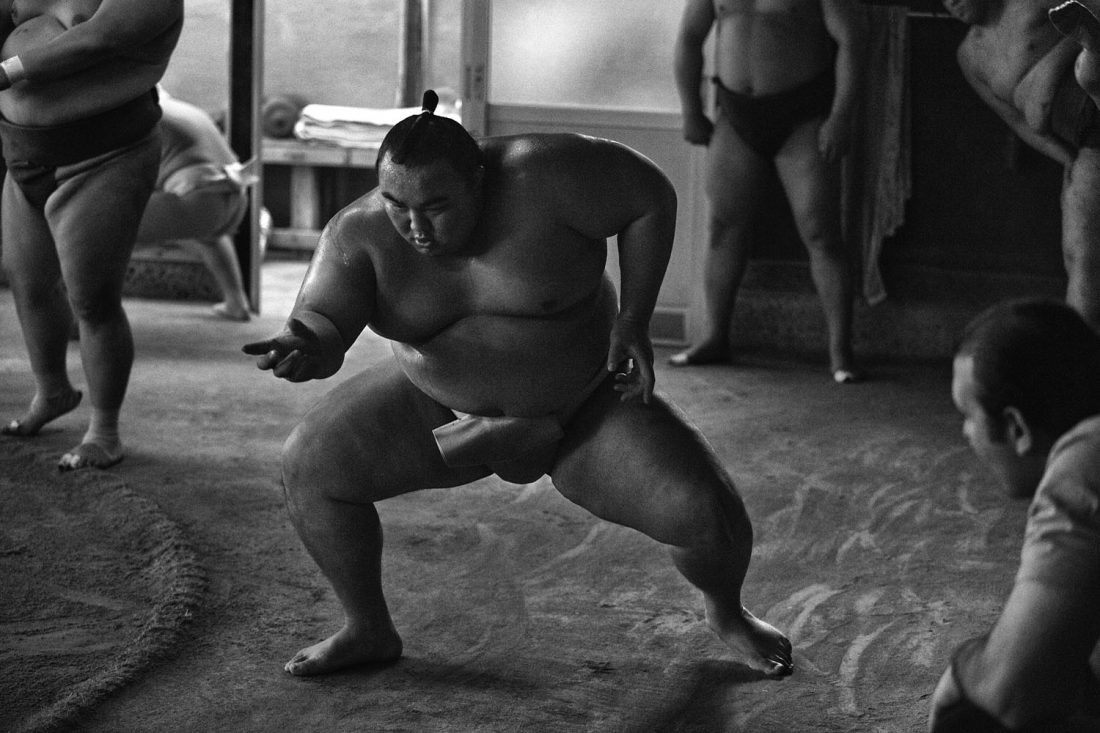
18 / 30
Autour de la piste, un lutteur effectue le suri-ashi /// Around the ring, a wrestler carries out the suri-ashi
-
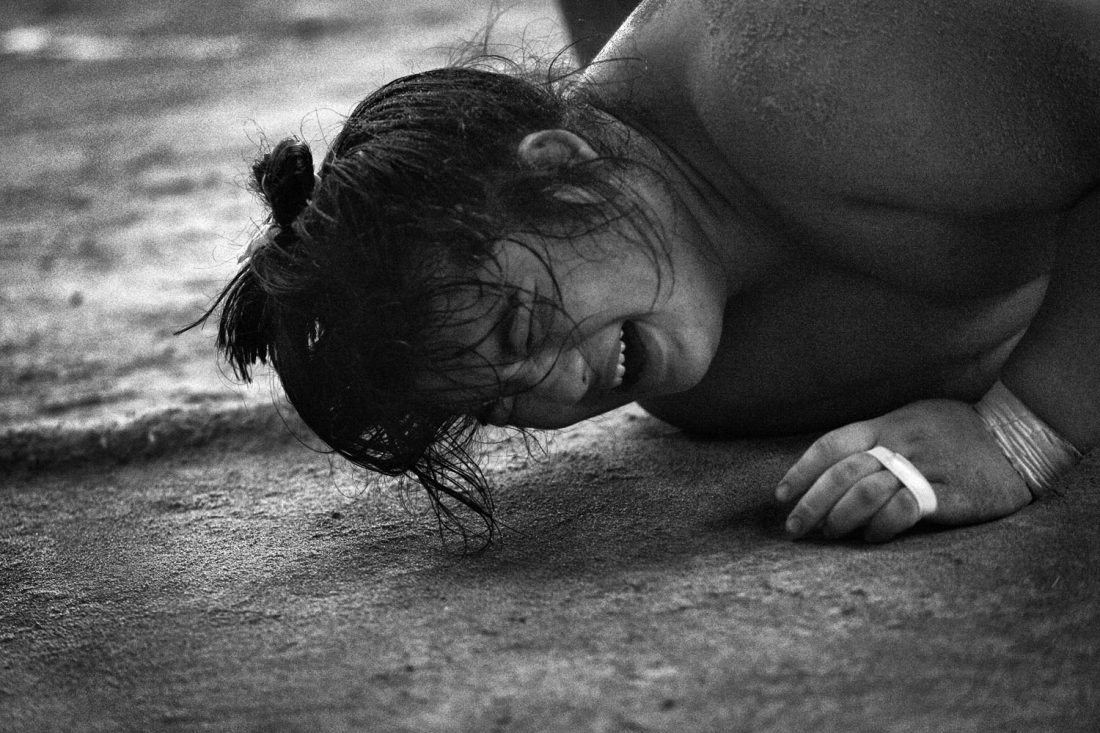
19 / 30
Souffrance d'un apprenti. Entrainement matinal dans une heya professionnelle /// Apprentice suffering. Morning training in a professional heya
-
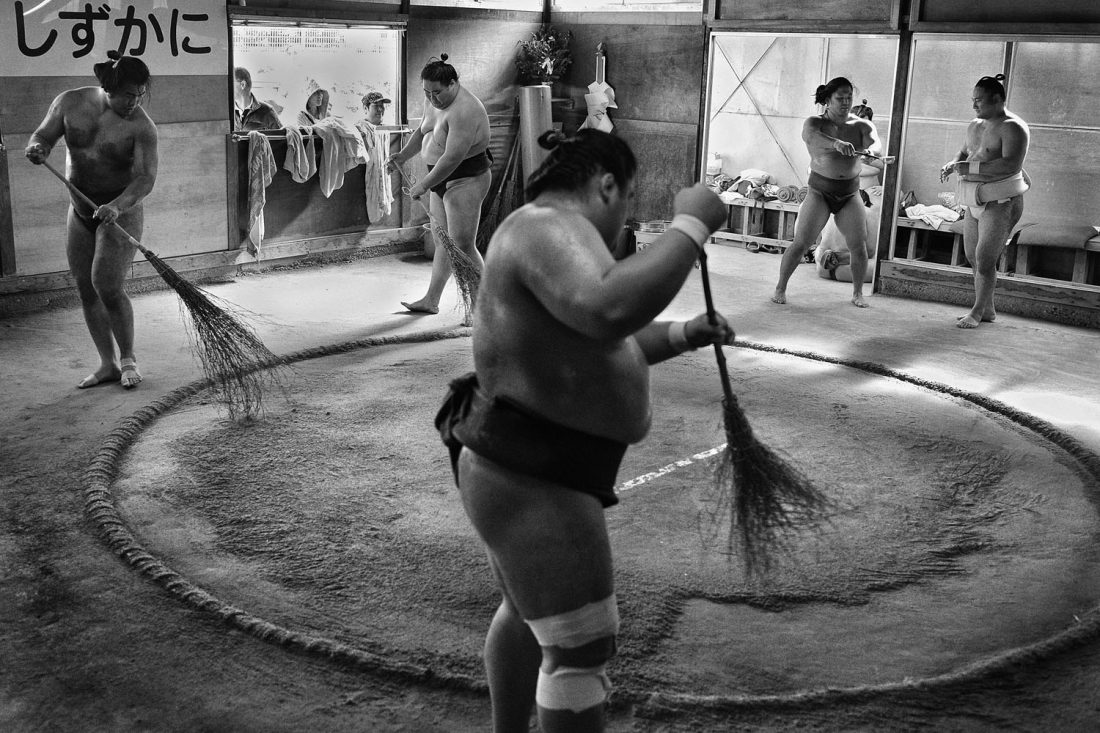
20 / 30
Entre deux séances, les lutteurs entretiennent le ring, pendant qu'un apprenti propose de l'eau à un champion /// Between two sessions, the wrestlers sweep the ring, while an apprentice gives water to a champion
-
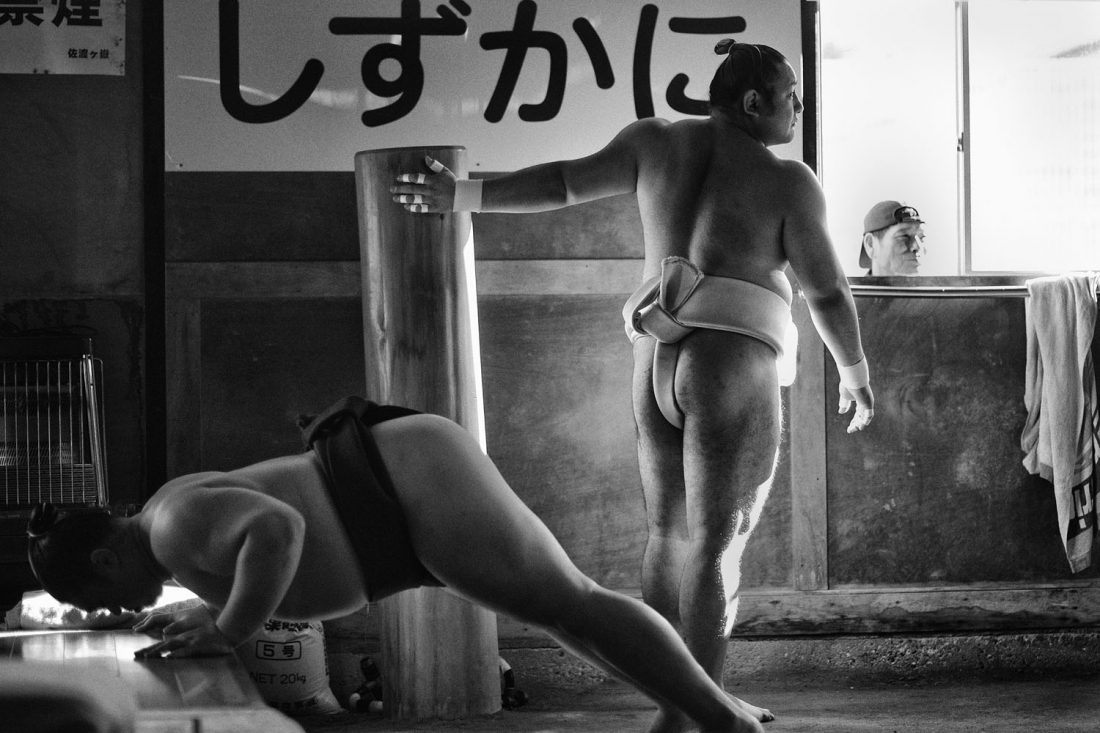
21 / 30
Entrainement matinal dans une heya professionnelle, devant un panneau "silence" /// Morning training in a professional heya in front of a sign "silence"
-
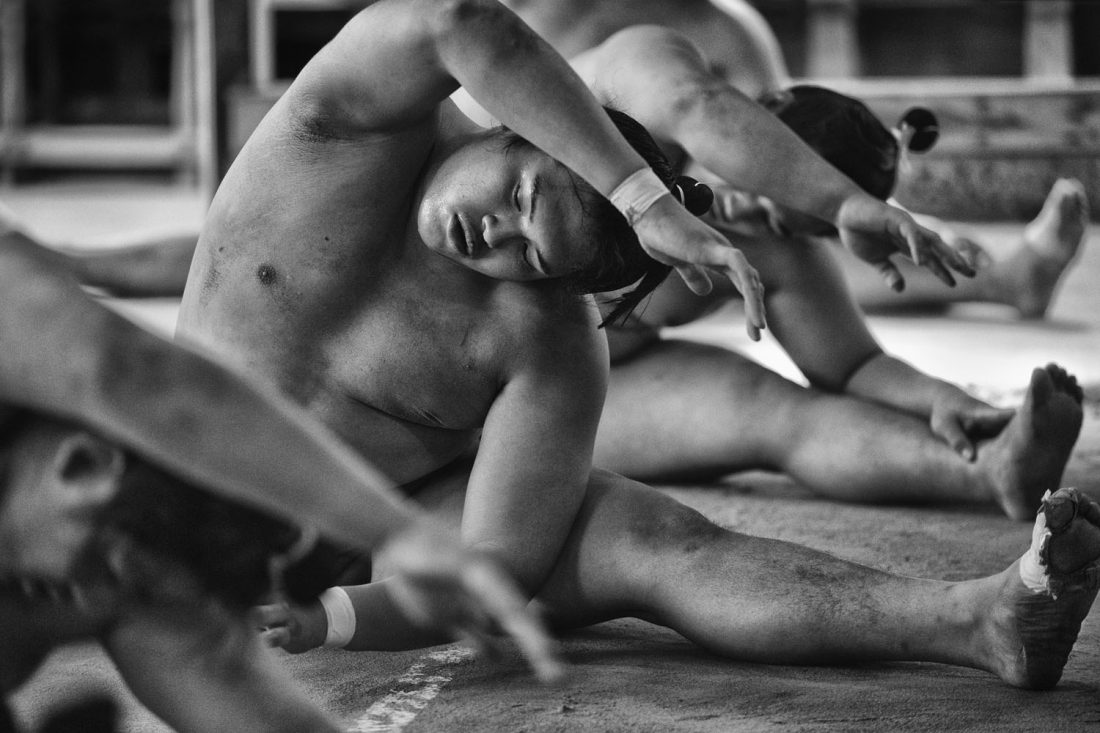
22 / 30
Etirements. La souplesse défie les limites de ces corps lourds /// Stretching exercises. Suppleness challenges the limits of these heavy bodies
-
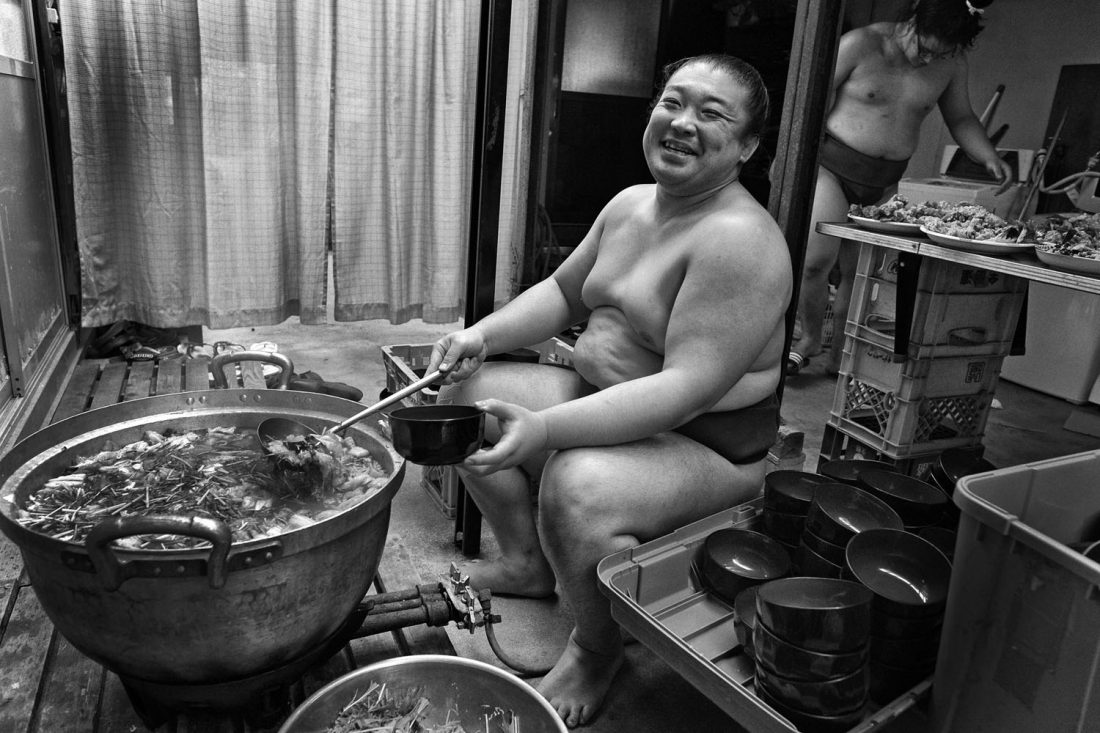
23 / 30
Les plus jeunes lutteurs servent le dejeuner en cuisine après l'entrainement matinal dans une heya professionnelle /// The youngest wrestlers serve lunch in the kitchen following the morning training in a professional heya
-
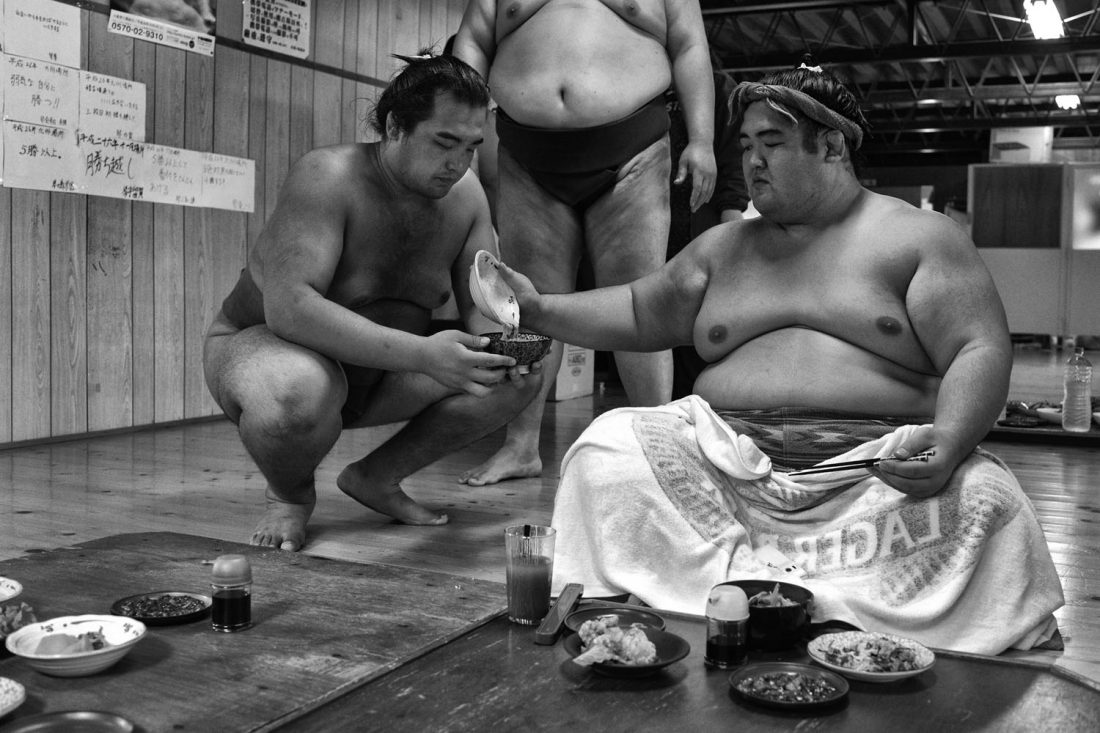
24 / 30
Le grand champion de la heya se fait servir son repas. Les quantites de Chankonabe consommees sont gigantesques /// The grand champion of the heya has his meals served to him. The quantities of Chankonabe consumed are gigantic. Morning training in a professional heya
-
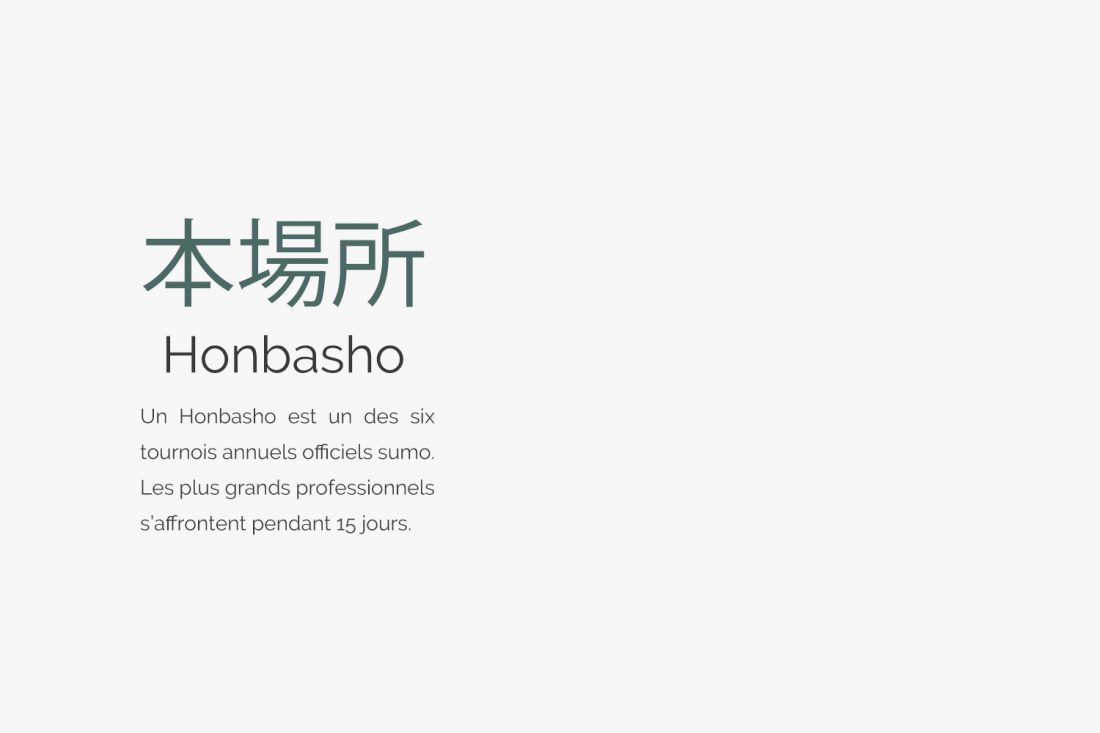
25 / 30
A Honbasho is one of the six annual official sumo tournaments during which the greatest professionals take turns fighting during 15 days
-
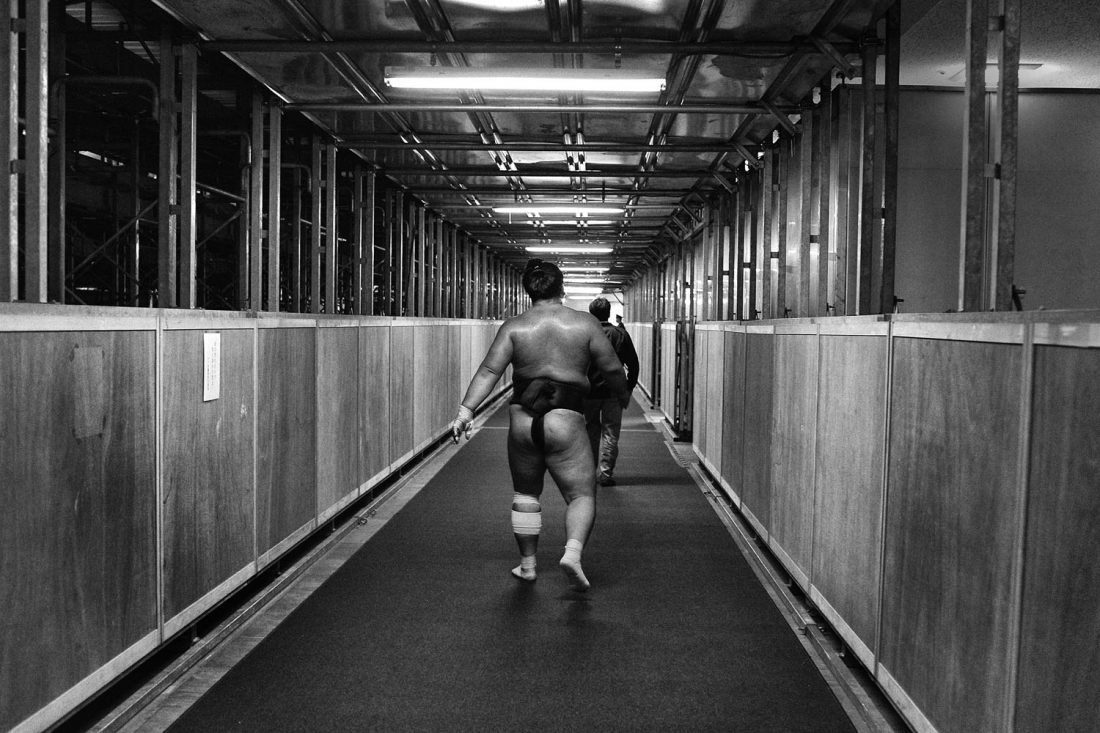
26 / 30
Dans le couloir menant au stade lors du tournoi annuel de Fukuoka. Un Honbasho est un des six tournois annuels officiels de sumo durant lequel se départagent les plus grands professionnels pendant 15 jours /// In the corridor leading to the stadium for the annual tournament in Fukuoka. A Honbasho is one of the six annual official sumo tournaments during which the greatest professionals take turns fighting during 15 days
-
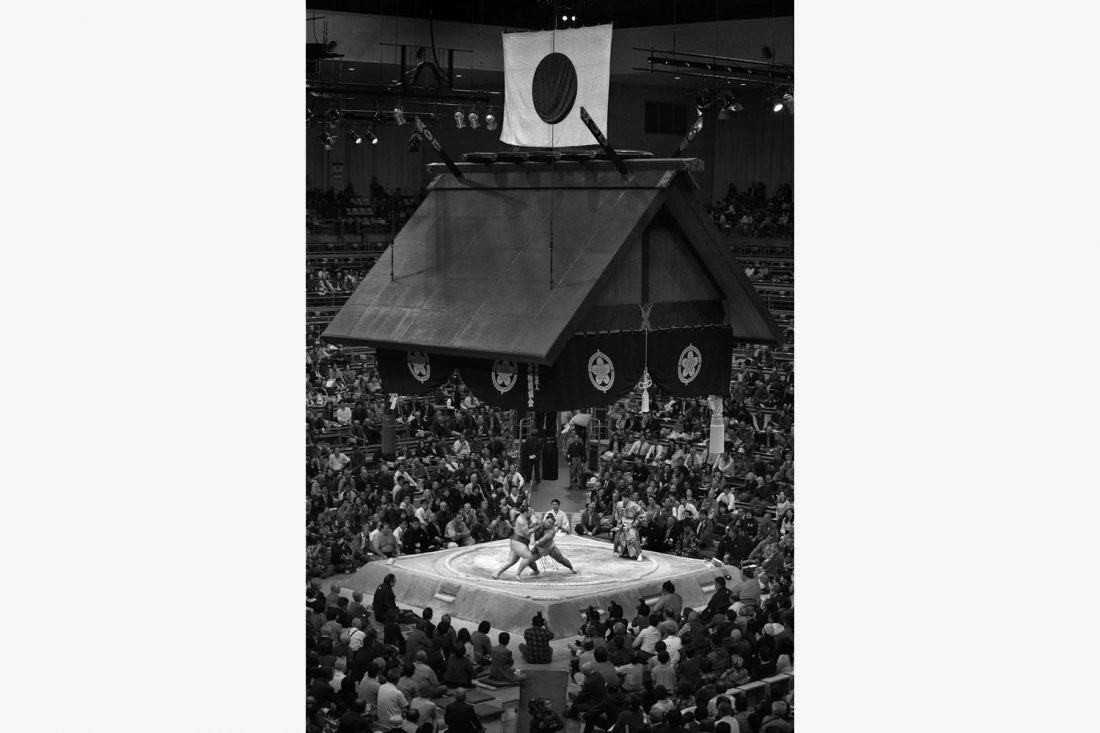
27 / 30
Honbasho, Fukuoka /// Honasho, Fukuoka
-
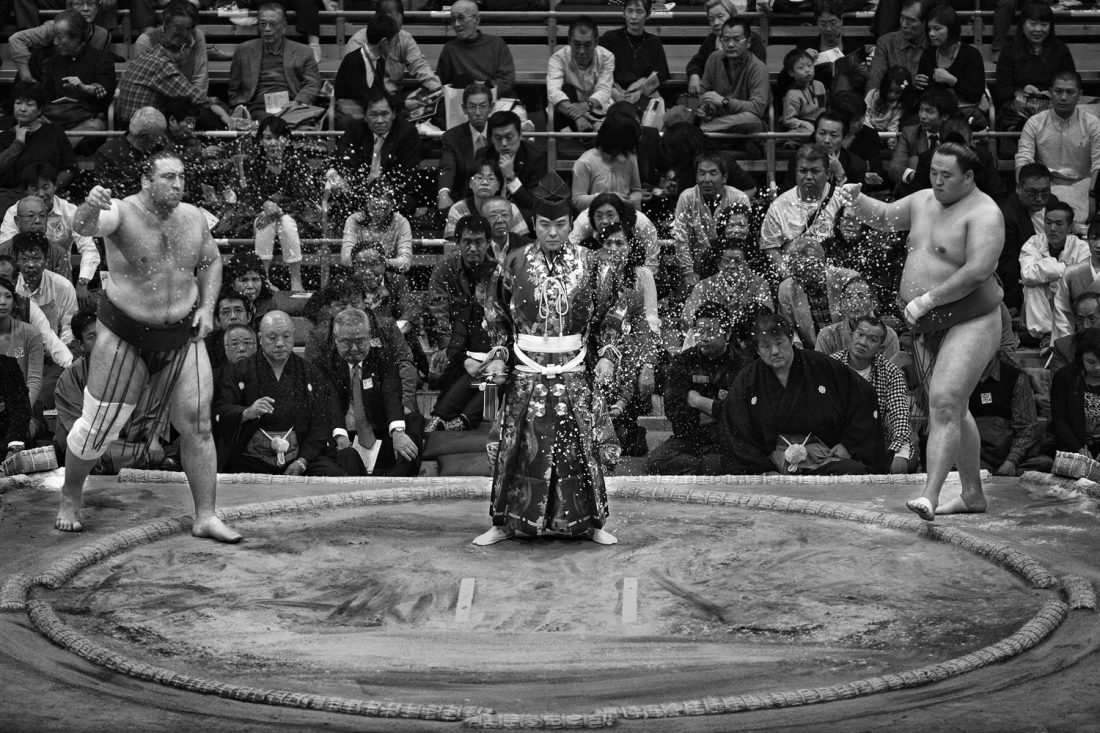
28 / 30
Avant le debut d'un match les lutteurs jettent du sel sur le ring. Selon la croyance Shintoïste, le sel chasse les esprits malsains /// Before the start of a match the wrestlers throw salt onto the ring. According to Shintoist beliefs, the salt chases away unwholesome spirits and it has a purifying effect
-
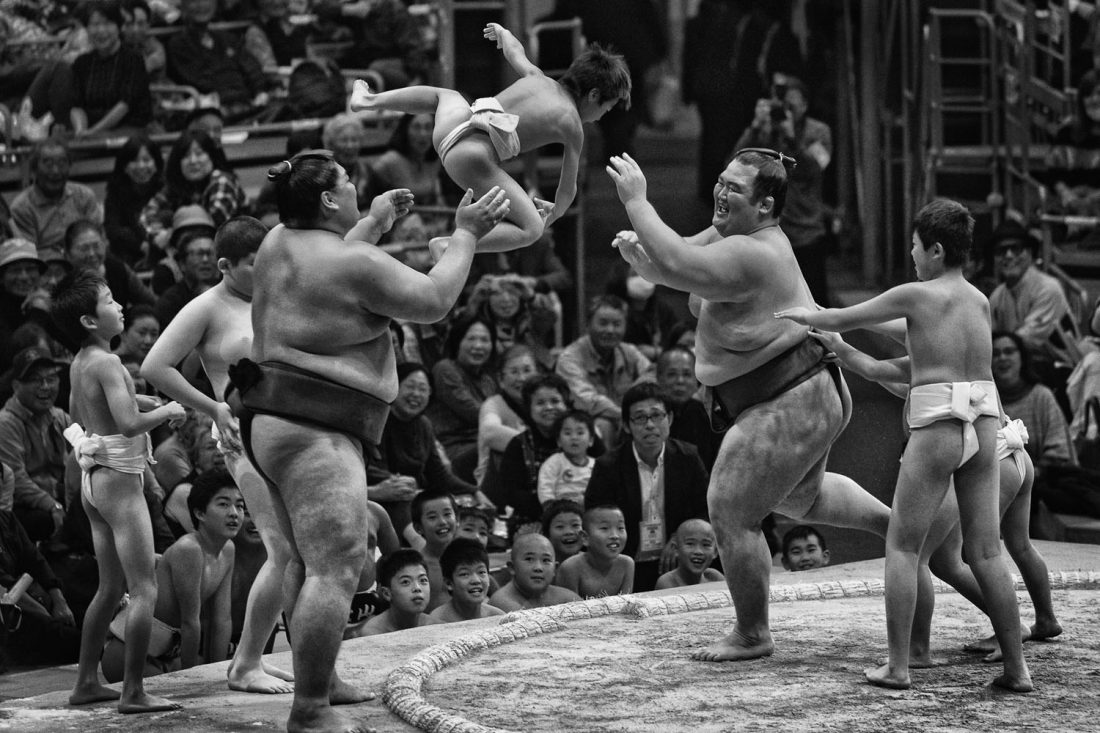
29 / 30
Demonstration avant le debut d'un Honbasho /// Demonstration before the start of a Honbasho
-
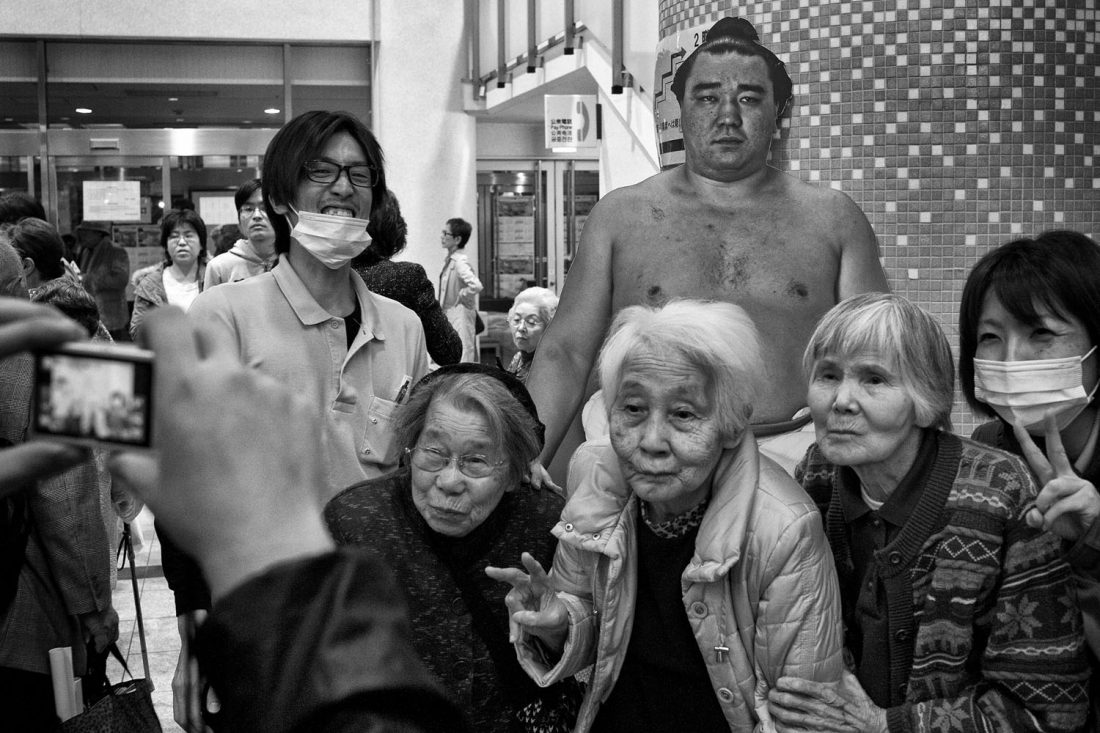
30 / 30
Des supporters se font photographier devant une affiche grandeur nature de leur champion /// Fans take pictures of themselves in front of a life-size poster of their champion
Sumo stories
Au Japon, les meilleurs lutteurs de sumo sont considérés comme des demi-dieux. Pratiquer ce sport ancestral, c’est entrer en religion. Il y a 1500 ans, le sumo est apparu comme un rituel shinto: combats et danses étaient consacrées aux dieux. Le lutteur de sumo a fait de son corps un temple qu’il élargit au prix d’un défi physique constant. Des meilleurs clubs scolaires de sumo où les adolescents essaient de progresser, en passant par les écuries professionnels, jusqu’à atteindre le rang ultime : Yokozuna.
Toute sa vie, le lutteur de sumo reste un champion en devenir, un Rikishi (littéralement une «personne instruite dans le domaine de la force»). Ces jeunes hommes consacrent leur vie à retenir le temps dans l’épaisseur de leur corps, pour trois secondes de chute ou un court instant de gloire. Ceci est la poursuite d’un rêve, non seulement un rêve de célébrité, mais aussi un rêve de perfection : là se trouve l’esprit du Japon.
EN
In Japan, the best sumo wrestlers are considered half-gods. Practicing this ancestral sport is like taking a vow. 1500 years ago, sumo wrestling appeared as religious shinto rituals : fighting and danses were dedicated to gods. Sumo wrestler made of his body a temple which he makes it bigger at the cost of a constant physical challenge.
The portfolio Sumo stories : A long way to glory talks about hard way, from the best sumo school clubs where teenagers try to progress, to professional stamples and tournaments, until reaching the ultimate rank : Yokozuna. All his life long, the sumo wrestlers are aspiring champions. Those Young men dedicate their life to retains time in the thickness of their body, for 3 seconds of falling or a short moment glory. This is a pursuit of a dream, not only a dream of glory, but a dream of perfection, this is Japan.
